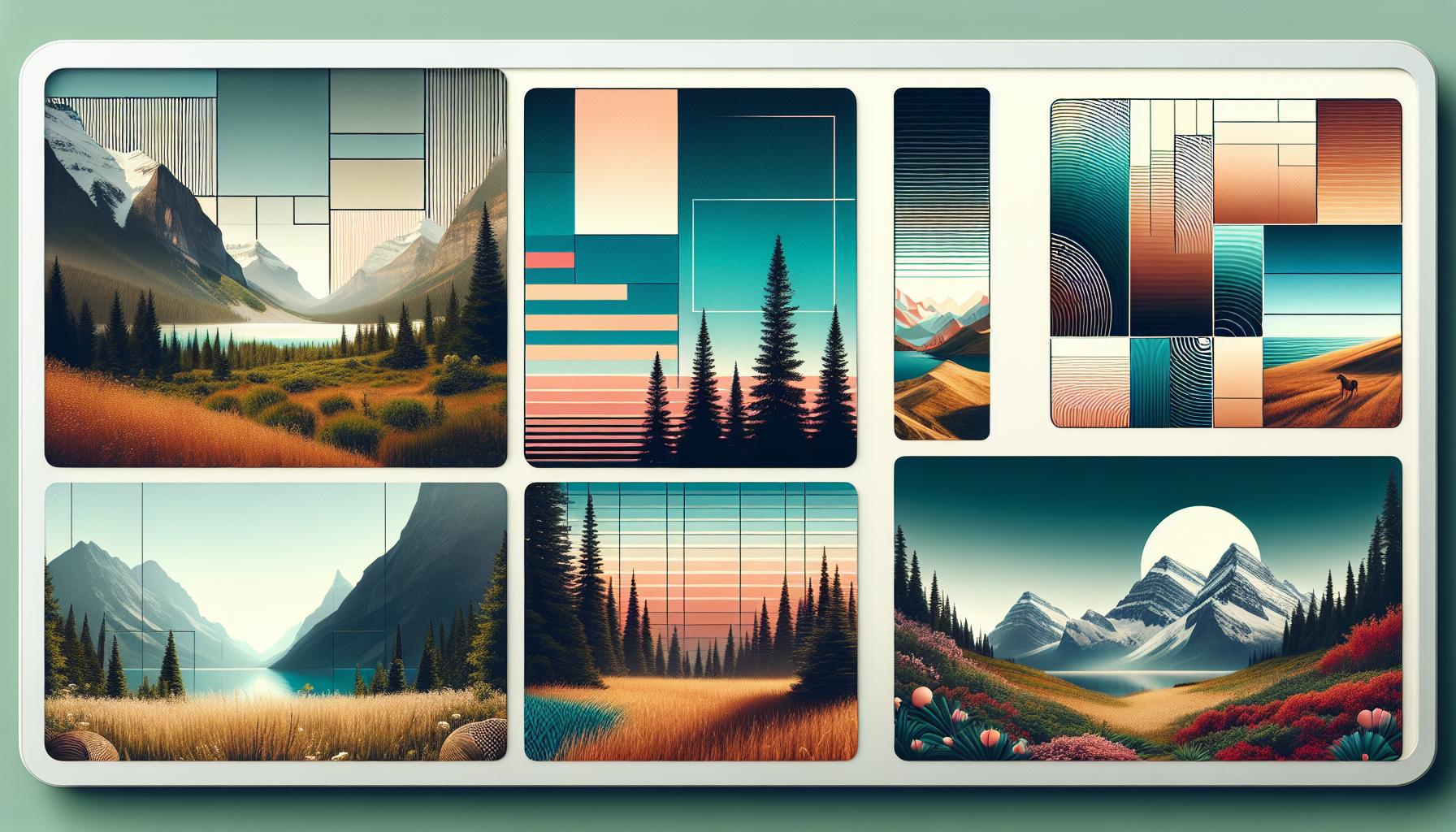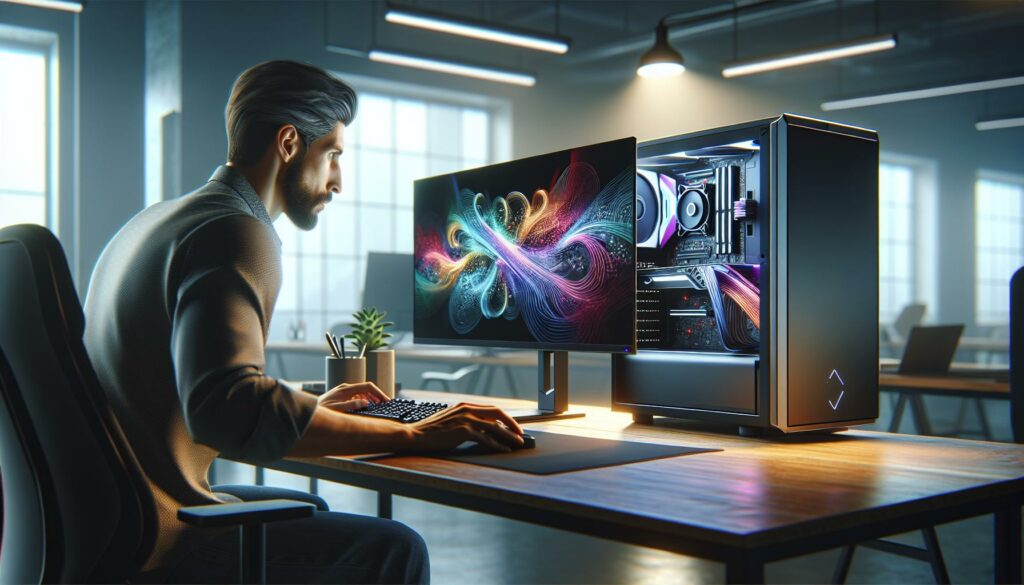I’ve always believed that a computer’s background is more than just eye candy – it’s a reflection of our personal style and can significantly impact our daily digital experience. Whether you’re into minimalist designs, vibrant landscapes, or artistic illustrations, the right aesthetic background can transform your workspace into something truly inspiring.
As someone who spends countless hours in front of screens, I’ve discovered that choosing the perfect aesthetic background isn’t just about finding a pretty picture. It’s about creating an atmosphere that enhances productivity, reduces eye strain, and adds a touch of personality to your digital environment. From vapor wave aesthetics to nature-inspired themes, there’s an endless world of possibilities waiting to refresh your desktop experience.
Key Takeaways
- Aesthetic computer backgrounds combine visual appeal with functionality, ranging from minimalist designs to nature-inspired scenes and vaporwave aesthetics
- Color schemes play a crucial role in background selection, with optimal contrast ratios of 4.5:1 and brightness levels of 50-70% recommended for eye comfort
- High-quality backgrounds are available through various platforms, including free resources like Unsplash and Pexels, as well as premium sites like Shutterstock and Adobe Stock
- Creating custom backgrounds requires specific design tools like Adobe Photoshop or Canva, along with understanding of color theory and composition principles
- Screen resolution is vital when choosing backgrounds – always select images that match or exceed your display’s resolution (e.g., 3840×2160 pixels for 4K screens)
Backgrounds for Computers Aesthetic
Aesthetic computer backgrounds blend artistic elements with functional design principles to create visually appealing desktop environments. These backgrounds transform ordinary screens into personalized digital spaces through carefully selected imagery styles composition techniques.
Types of Aesthetic Styles
- Minimalist: Clean lines single-color backgrounds geometric patterns
- Vaporwave: Retro computing elements neon colors glitch effects
- Nature-inspired: Mountain landscapes ocean scenes forest photography
- Lo-fi: Animated scenes warm colors nostalgic elements
- Abstract: Gradient meshes fluid designs geometric compositions
- Cyberpunk: Futuristic cityscapes neon accents tech-oriented designs
- Cottagecore: Pastoral scenes floral patterns earthy tones
- Dark Mode: Deep blacks subtle contrasts minimal lighting
| Color Scheme | Psychological Effect | Best Use Case |
|---|---|---|
| Monochrome | Promotes focus | Work environments |
| Cool Blues | Reduces eye strain | Extended screen time |
| Warm Tones | Enhances creativity | Creative workspaces |
| Earth Tones | Increases stability | Reading-heavy tasks |
| Pastels | Reduces visual stress | Long work sessions |
- Contrast Ratios: 4.5:1 minimum for text readability against backgrounds
- Color Harmony: Complementary pairs create visual balance
- Brightness Levels: 50-70% optimal for reducing eye fatigue
- Saturation: Moderate levels maintain visual interest without distraction
- Color Temperature: 6500K standard for digital displays
- Dynamic Range: HDR-compatible backgrounds for enhanced depth
- Color Space: sRGB compatibility for consistent display across devices
Popular Aesthetic Background Categories

Aesthetic computer backgrounds encompass diverse visual styles that cater to different preferences and digital environments. Each category offers unique elements that transform desktop spaces into personalized visual experiences.
Minimalist Designs
Minimalist backgrounds feature clean lines, limited color palettes and balanced negative space. These designs incorporate essential elements like geometric shapes, monochromatic gradients or simple patterns. Common minimalist styles include:
- Single-color backgrounds with subtle texture variations
- Two-tone geometric compositions
- Understated line art in neutral colors
- Abstract shapes with ample white space
- Zen-inspired patterns with muted tones
Nature-Inspired Backgrounds
Nature backgrounds capture organic elements and serene outdoor scenes for a calming digital environment. These visuals integrate:
- Mountain landscapes with gradient skies
- Ocean waves in varying shades of blue
- Forest canopies with filtered sunlight
- Macro photography of flowers or leaves
- Desert scenes with sand dunes
- Cloudy skyscapes in pastel colors
- Sunset gradients in pink and purple
- Grid patterns with neon accents
- Vintage computer interface elements
- Japanese typography and symbols
- 80s-inspired digital landscapes
- Glitch art effects with pastel colors
Where to Find Quality Aesthetic Backgrounds

High-resolution aesthetic backgrounds are available through numerous online platforms, ranging from free resources to premium collections. Here’s a curated selection of reliable sources for finding visually appealing desktop backgrounds.
Best Free Resources
- Unsplash: Contains over 3 million free high-resolution photos, including minimalist designs, nature scenes, abstract art
- Pexels: Offers 1 million+ curated photos with new aesthetic backgrounds added daily
- Wallhaven: Features a dedicated aesthetic category with user-curated collections, advanced search filters
- Reddit Communities: Active subreddits like r/wallpapers r/wallpaperdump share user-created backgrounds
- DeviantArt: Hosts original artwork from digital artists, including anime-inspired vaporwave aesthetics
- Google Arts & Culture: Provides high-resolution artwork from 2,000+ museums worldwide
- Shutterstock: Offers 400 million+ professional images with weekly updates of trending aesthetics
- Adobe Stock: Contains curated collections of aesthetic backgrounds with consistent style themes
- ArtStation: Features premium artwork from professional digital artists specializing in cyberpunk dark mode aesthetics
- Creative Market: Sells unique background bundles created by independent designers
- Envato Elements: Provides unlimited access to 17 million+ design assets including aesthetic wallpapers
- Getty Images: Houses exclusive high-quality photographs perfect for minimalist desktop backgrounds
- Search filters for specific aesthetics
- Multiple resolution options
- Regular content updates
- Download tracking
- Licensing information
How to Create Your Own Aesthetic Backgrounds

Creating custom aesthetic backgrounds combines digital design tools with artistic principles to produce personalized desktop environments. Here’s a detailed guide to crafting unique backgrounds that match your style preferences.
Essential Design Tools
Digital art creation requires specific software tools to achieve professional results:
- Adobe Photoshop: Industry-standard photo editing software for complex layering effects
- Canva: User-friendly design platform with pre-made templates for quick customization
- Figma: Vector-based design tool ideal for creating scalable geometric patterns
- GIMP: Free open-source alternative to Photoshop with comprehensive editing features
- Procreate: iPad-based digital painting app for creating artistic backgrounds
- Color picker tools: Adobe Color wheel or Coolors for generating cohesive color palettes
- Color Theory
- Use complementary colors for dynamic contrast
- Limit palettes to 3-4 colors for cohesive designs
- Apply the 60-30-10 rule for color distribution
- Balance
- Center focal points for symmetrical designs
- Distribute elements evenly across the canvas
- Create asymmetrical balance through weighted composition
- Typography
- Select readable fonts for text elements
- Maintain consistent font families
- Scale text proportionally to screen resolution
- Composition
- Apply the rule of thirds for element placement
- Create depth through layering techniques
- Use negative space to prevent visual clutter
- Resolution
- Set canvas size to 3840×2160 pixels for 4K displays
- Export in PNG format for optimal quality
- Maintain aspect ratios for different screen sizes
Tips for Choosing the Perfect Aesthetic Background
Selecting the ideal aesthetic background involves considering technical specifications alongside personal preferences. These guidelines ensure your chosen background enhances your digital workspace while maintaining visual clarity.
Screen Resolution Considerations
The resolution of your screen determines the optimal size for your background image. A 4K display (3840 x 2160 pixels) requires higher-resolution images than a 1080p screen (1920 x 1080 pixels) to maintain sharpness. Here’s a breakdown of recommended image resolutions:
| Screen Type | Minimum Resolution | Optimal Resolution |
|---|---|---|
| HD | 1280 x 720 | 1920 x 1080 |
| Full HD | 1920 x 1080 | 2560 x 1440 |
| 4K UHD | 3840 x 2160 | 5120 x 2880 |
| 5K | 5120 x 2880 | 6016 x 3384 |
- Choose images larger than your screen resolution to prevent pixelation
- Select backgrounds with a 16:9 aspect ratio for standard displays
- Download images in PNG or JPEG format for optimal quality
- Check the image dimensions before setting as background
- Select color schemes that align with your workspace theme
- Match backgrounds to your desktop icon colors
- Consider seasonal variations for dynamic changes
- Incorporate design elements from your favorite aesthetic movements:
- Minimalist: monochrome patterns
- Vaporwave: retro elements with neon colors
- Nature: landscapes or botanical designs
- Abstract: geometric shapes or fluid patterns
- Dark mode: low-light designs with subtle contrast
The perfect aesthetic computer background can transform your digital workspace into a personalized sanctuary that reflects your style while enhancing productivity. I’ve shared my expertise on finding creating and implementing backgrounds that not only look stunning but also serve a practical purpose in your daily computing experience.
Whether you prefer serene nature scenes minimalist designs or vibrant artistic compositions there’s an aesthetic background waiting to elevate your desktop environment. I encourage you to explore different styles experiment with custom creations and discover the perfect balance between visual appeal and functionality.
Remember that your computer background is more than just a picture – it’s an extension of your digital identity and a daily source of inspiration. Take time to choose or create a background that resonates with you and watch how it enhances your overall computing experience.


